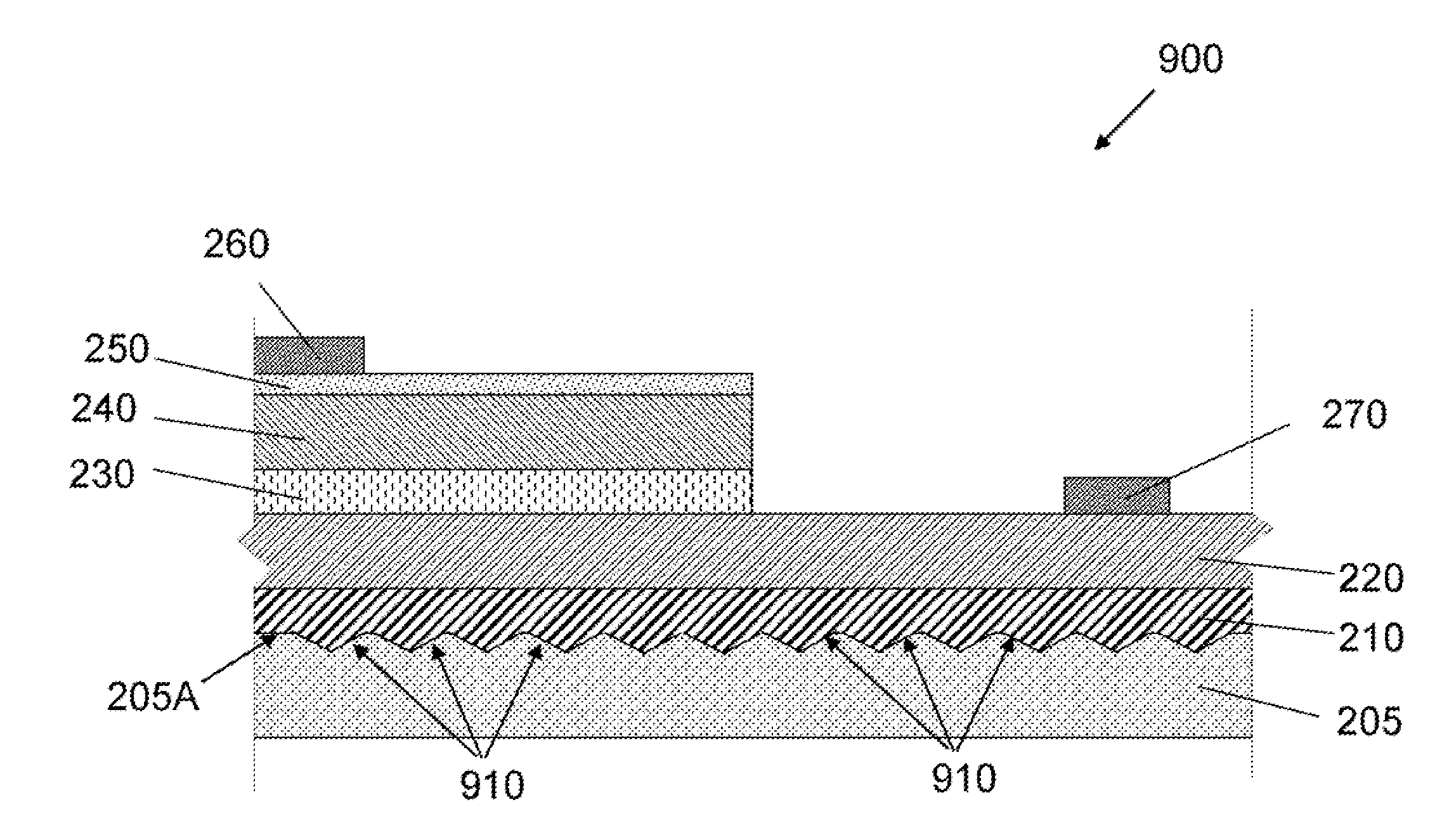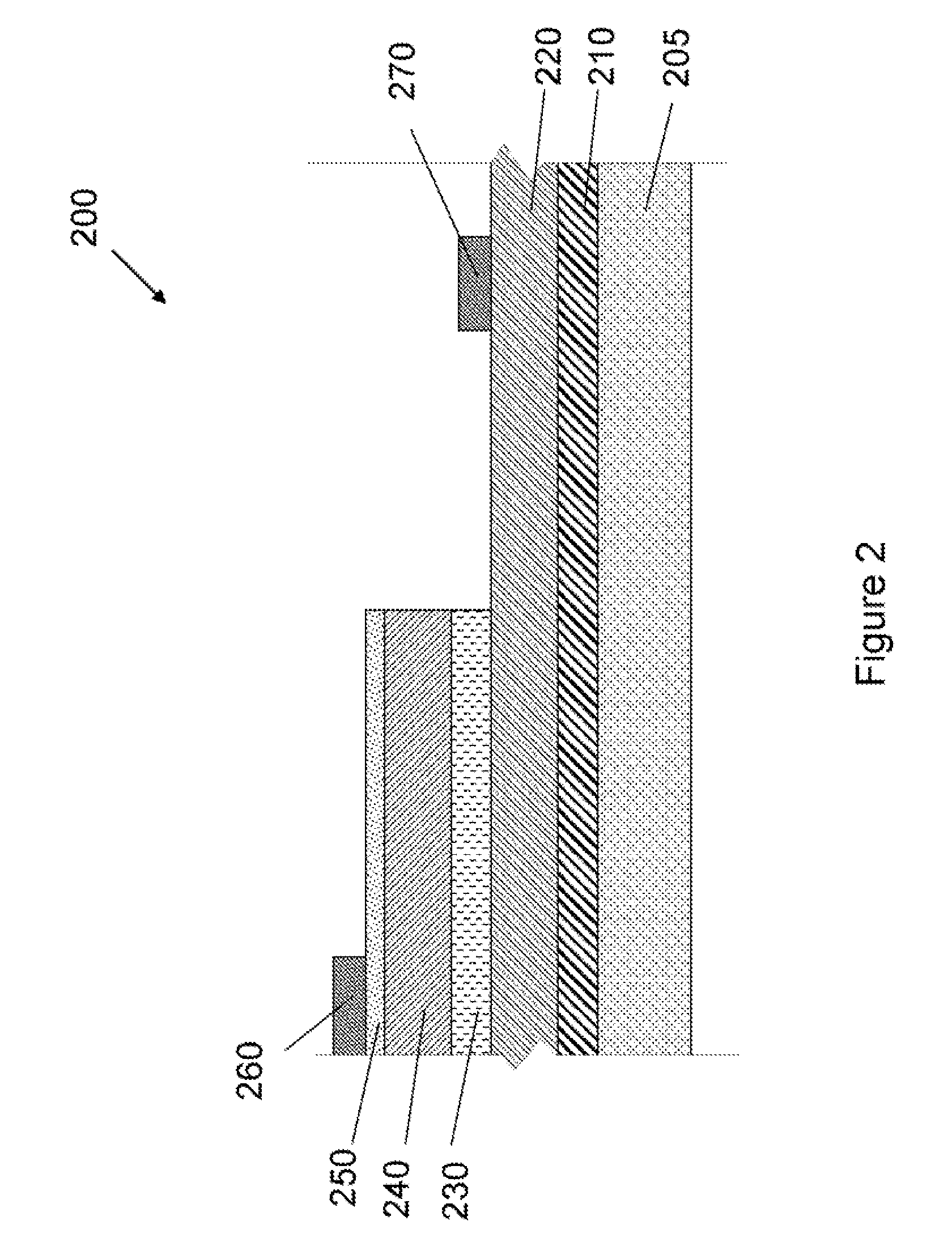Silicon based solid state lighting
a solid-state lighting and silicon-based technology, applied in semiconductor devices, lasers, semiconductors, etc., can solve the problems of low manufacturing throughput of conventional solid-state lighting devices, and high cost of conventional semiconductor structures and devices used for solid-state lighting, etc., to prevent associated layer cracking or delamination, increase light emission efficiency, and prevent cracking or delamination
- Summary
- Abstract
- Description
- Claims
- Application Information
AI Technical Summary
Benefits of technology
Problems solved by technology
Method used
Image
Examples
Embodiment Construction
[0026]Referring to FIG. 2, a LED structure 200 includes a substrate 205, which can have an upper surface in the (111) or a (100) crystalline direction. The substrate 205 can be formed by silicon, silicon oxide, or glass. For a silicon substrate, the substrate 205 can include a (100) or (111) upper surface. The substrate 205 can also include a complimentary metal oxide semiconductor (CMOS) material that includes an electric circuitry for driving and controlling the LED structure 200. A buffer layer 210 is formed on the substrate 205. The buffer layer 210 can be formed of GaN, ZnO, AlN, HfN, AlAs, TaN, or SiC. As described below in more details in conjunction with FIG. 6, the buffer layer 210 is deposited on die substrate 205 using atomic laser deposition (ALD) in a vacuum chamber maintained at a temperature in the range of 450 C to 750 C, such as about 600 C. The buffer layer 210 can have a thickness of about 1 to 1000 Angstroms such as 10 to 100 Angstroms. The buffer layer 210 can w...
PUM
| Property | Measurement | Unit |
|---|---|---|
| thickness | aaaaa | aaaaa |
| temperature | aaaaa | aaaaa |
| temperature | aaaaa | aaaaa |
Abstract
Description
Claims
Application Information
 Login to View More
Login to View More - R&D
- Intellectual Property
- Life Sciences
- Materials
- Tech Scout
- Unparalleled Data Quality
- Higher Quality Content
- 60% Fewer Hallucinations
Browse by: Latest US Patents, China's latest patents, Technical Efficacy Thesaurus, Application Domain, Technology Topic, Popular Technical Reports.
© 2025 PatSnap. All rights reserved.Legal|Privacy policy|Modern Slavery Act Transparency Statement|Sitemap|About US| Contact US: help@patsnap.com



